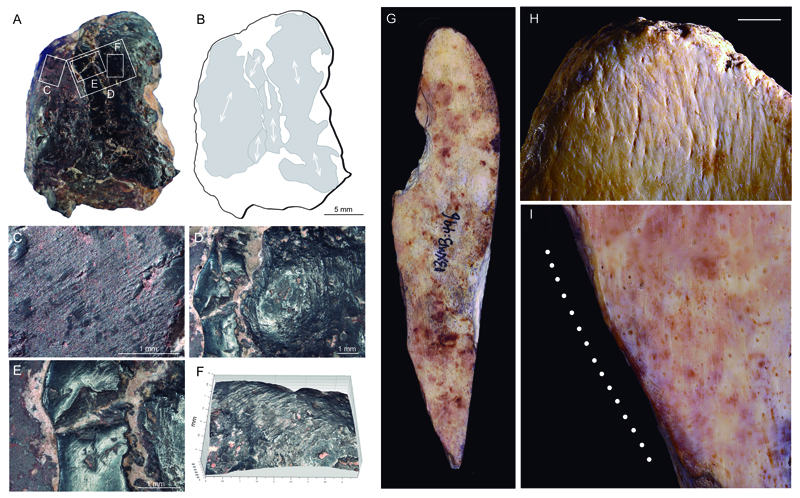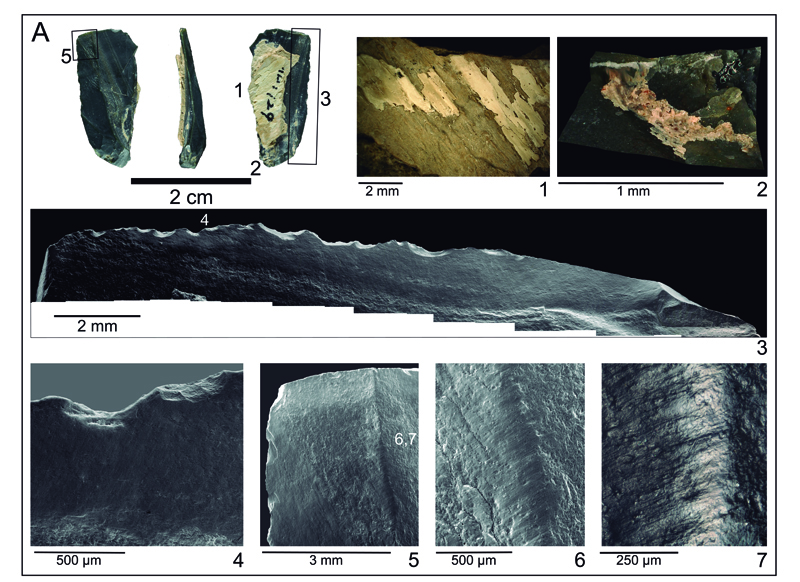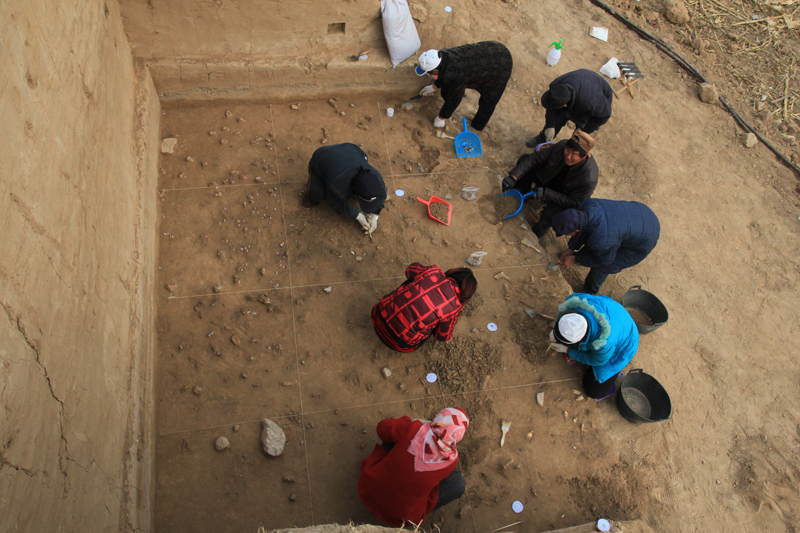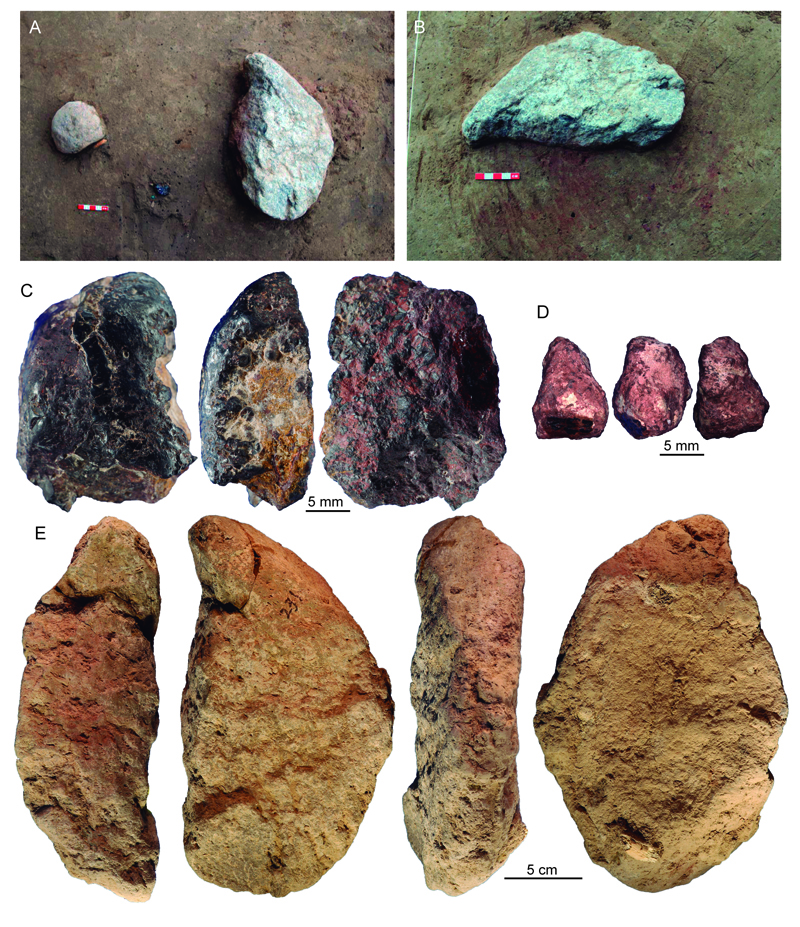NewsNext Previous
Archaeologists Discover Innovative 40,000 Year-Old Culture in China
When did populations of Homo sapiens first arrive in China and what happened when they encountered the Denisovans or Neanderthals who lived there? An international team in which two Spanish researchers take part, discovered in North China a 40,000 year-old site frequented by populations with innovative behaviours and unique toolkits which do not correspond with archaeological sites inhabited by archaic populations in the region or those associated with the expansion of modern humans. The discovery of this particular technology contradicts the idea of a rapid replacement of archaic populations by modern humans, and rather suggests a period of genetic and cultural hybridization. The results of this research have just been published in the journal Nature.
Tarragona, march 3, 2022 One of the most profound events in human evolution was the worldwide expansion of Homo sapiens. Fossil, genetic, and archaeological evidence indicates that modern humans dispersed out of Africa multiple times over the last approximately 200 thousand years, interbreeding with archaic hominins such as the Neandertals and Denisovans as they dispersed across Eurasia. However, paleoanthropological and archaeological evidence on the arrival of modern populations to eastern Asia and their relations with indigenous populations remains ambiguous. It has been proposed that H. sapiens was present in northern China by 110,000 years ago, but this hypothesis has been recently questioned by new dating and genetic analyses. Currently available human fossils and DNA data show that modern populations were present in China 40 thousand years ago. However, little is known about behavioural changes potentially associated to their presence in this wide region until roughly 29,000 years ago, until microblade became the dominant technology.
It is often argued that the expansion of modern humans was facilitated by the use of economic, social and symbolic adaptations. Pigment use and miniaturised technologies, for instance, are seen as key archaeological indicators of symbolically mediated behaviour and are considered to have had adaptive advantages for such expansion. However, except for the use of ornaments and pigments at one of the Zhoukoudian caves (approximately 35-33,000 years ago) and beads made from ostrich eggshells at the Shuidonggou 2 site (approximately 31,000 years ago), no other clear evidence of this behaviour.
The archaeological remains found in the Xiamabei site, in the rich Nihewan basin of northern China, fill this gap and shed new light on this key moment in the history of the peopling of Asia.
“Findings at Xiamabei are of great importance for the study of complex human cultures, as they contain the earliest known evidence of ochre processing in eastern Asia” says Dr Daniela Rosso (Universitat de València, Dept. de Prehistòria, Arqueologia i Història Antiga), who participated in the chemical, mineralogical and technological analysis of pigments. Different types of ochre were brought to the site and processed through pounding and abrasion to produce powders of different colour and consistency, the use of which has impregnated the habitation floor.
In addition, the human group that frequented this site used very small stone tools made of chert and quartz), obtained mainly by bipolar knapping on an anvil. The functional study of a sample of the tools was carried out by Dr Andreu Ollé, researcher at Institut Català de Paleoecologia Humana i Evolució Social and associate lecturer at Universitat Rovira i Virgili. “Thanks to the combination of optical, 3D digital and scanning electronic microscopy, we found that several of the pieces were fixed with the help of plant fibres to handles, some of them of bone, and used in tasks such as soft plant and wood processing, hide scraping or drilling actions” says Dr. Ollé. Use-wear traces found on non-hafted pieces complete the range of activities, documenting butchering actions and their use as wedges on hard materials. Residue analysis carried out, moreover, has made it possible to relate the use of ochre both to the hafting procedures and to the processing if the hides.
In sum, the Xiamabei assemblage represents the apparition, 40,000 years ago, of cultural expressions and features that are unique or exceedingly rare in northeast Asia. Technologically, there is an unusual combination including a predominant bipolar knapping, which produces blanks morphometrically comparable to bladelets (but without their characteristic production methods) with a really scarce modification by retouch, and with a systematic presence of hafted pieces, some of them of bone. The collection also includes a non-formal bone instrument, with clear traces of use.
And to all this is added the systematic processing of pigments, although, in this case, it is not associated with elements of personal ornamentation such as ostrich egg beads, shells or perforated teeth, as is often the case in later sites, which present already a clear microlaminar technology.
Such original combination of cultural features may reflect an early colonisation attempt by modern humans, unknown to date, perhaps including genetic and cultural exchanges with local Denisovans. They may also correspond to a local cultural evolution of the Denisovans, possibly after early contact with modern populations.
Although the absence of human remains does not allow to lean towards one of the two scenarios, the original behaviours identified by the researchers, which differ from those observed to date, suggest a complex transition period with repeated episodes of genetic and cultural exchange: a mosaic of innovation patterns, that would imply in some cases the spread of populations and innovations and, in others, the persistence of local traditions and the local invention of new practices all taking place.
In short, this research contributes to reinforcing the idea that our culture emerged through successive episodes of genetic and cultural exchange over large geographic areas rather than as a single, rapid wave across Asia.
Reference:
Fa-Gang Wang, Shi-Xia Yang, Jun-Yi Ge, Andreu Ollé, Ke-Liang Zhao, Jian-Ping Yue, Daniela Eugenia Rosso, Katerina Douka, Ying Guan, Wen-Yan Li, Hai-Yong Yang, Lian-Qiang Liu, Fei Xie, Zheng-Tang Guo, Ri-Xiang Zhu, Cheng-Long Deng, Francesco d’Errico, Michael Petraglia. 2022. Innovative ochre processing and tool-use in China 40,000 years ago. Nature. DOI: 10.1038/s41586-022-04445-2
https://www.nature.com/articles/s41586-022-04445-2
Partnerships
The excavations at Xiamabei were conducted by the Hebei Provincial Institute of Cultural Relics and Archaeology, in partnership with an interdisciplinary archaeological group from the Chinese Academy of Sciences (China), the Max Planck Institute for the Science of Human History (Jena, Germany), the University of Bordeaux (France), as well as Univ. de València, URV and IPHES as scientific partners in Spain.
 |
| Figure 1. Fragment of pigment showing abrasion marks (left) and bone tool with use-wear traces (right). |
 |
| Figure 2. Chert tool preserving part of its bone handle, with imprints of plant fibres probably related to binding. Mosaic of the used edge used, with several details of the plant polish produced by a whitling action and detail of the traces under the scanning electron (3-6) and optical microscopes (7). |
 |
| Figure 3. Excavation of the Xiamabei site in 2013. |
 |
| Figure 4. Fragments of pigments and possible processing tool from the Xiamabei site. |


